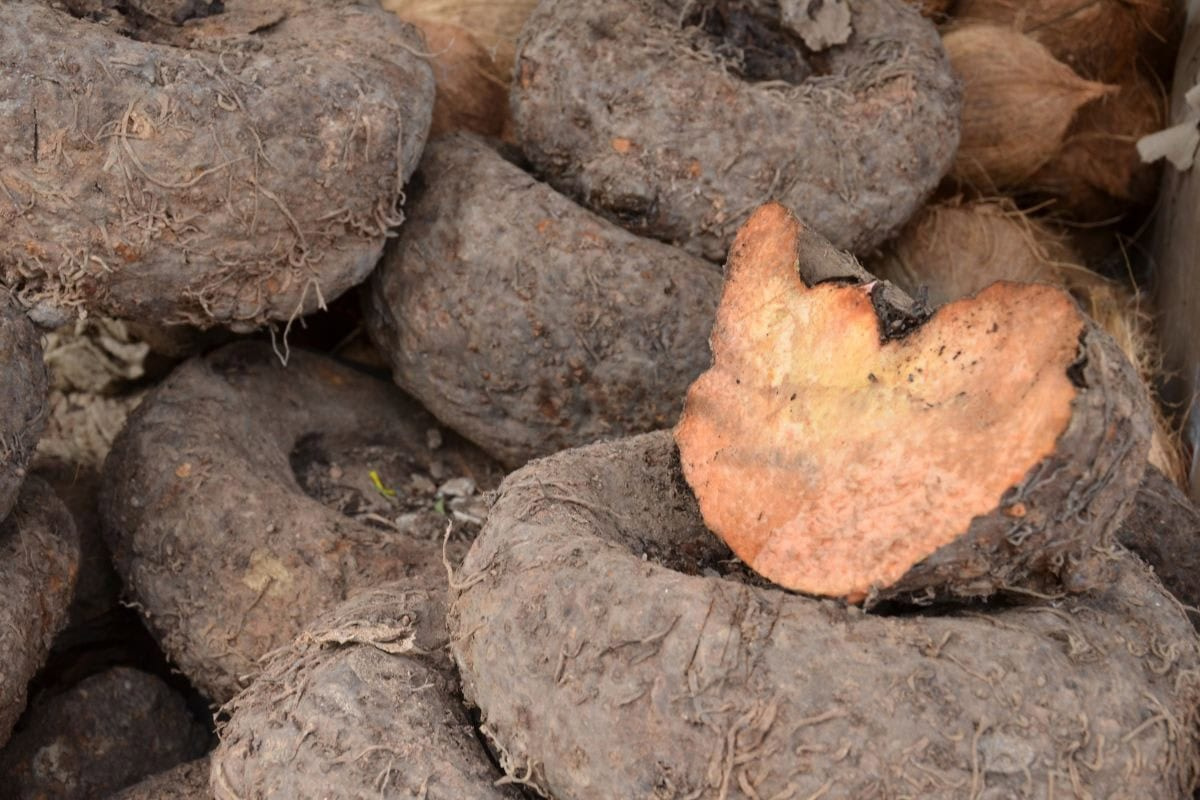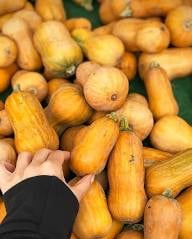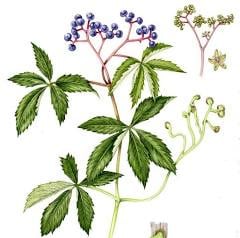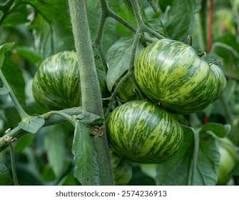Name a Fruit or Veggie A to Z
Replies
-
E-Elephant Foot YamThis type of yam is grown and eaten in Southeast Asia predominantly. Many types of curries are made from it, and in some households, the greens and stem are also used in cooking. Many major traditional Indian medicine systems also use it for its medicinal purposes, such as in the treatment of piles!
It is also known by its scientific name Amorphophallus paeoniifolius.
1 -
E -
"Egg fruit," or canistel, is a fruit native to Central America that is named for its dense, custard-like texture similar to a hard-boiled egg yolk. It is also known as yellow sapote and is eaten raw, used in smoothies, or baked into goods.
2 -
F - Frisée
Frisée is a type of curly endive, a leafy green vegetable that belongs to the chicory family. It is often used in mesclun, a mix of baby greens, and is known for its slightly bitter taste and crunchy texture
1 -
G - Grape tomatoes
1 -
H- Honey-nut Squash
Honeynut squash is generally more nutrient-dense than butternut squash, with about two to three times the amount of beta-carotene, which converts to vitamin A. Both squashes are healthy, providing fiber, vitamin C, potassium, and magnesium, but honeynut squash has a higher concentration of many nutrients.0 -
I - Italian seasoning
1 -
J- Jalapeño Peppers 🌶️
0 -
K - Kai-Lan, an Asian leafy green vegetable.
1 -
L - lemon bars
1 -
M - Mint
0 -
N- Nutmeg
0 -
O - Orange Zest
0 -
P - Pumpkins
0 -
Q - Quelites (edible wild greens) are an important and versatile ingredient used in traditional Mexican cooking, even though they might not be known by many outside of Mexico.
These Mexican wild edible plants are generally found growing next to crops of coffee, squash, and peppers, as well as next to corn fields. They are also easy to find near rivers or streams, and you can even find them growing out of the sidewalk during the rainy season. This is due to the fact that they can grow in a variety of climates, so long as there is enough water to help them grow.
The variety of quelites available at grocery stores is more limited, given the fact that they are a very low-cost product and there is not much profit in selling them. The only exception to this would be epazote and cilantro, which are very easy to find in most stores.
1 -
R - Rubharb
0 -
S - Salak grow in clusters at the base of the Rakum palm, a spine-covered palm that grows in small clumps averaging 3 to 4 meters high. Technically classified as a drupe, the fruits are 2 to 3 centimeters long and ovate with an elongated tapering tip. Their scaly exterior is brownish-orange and slightly rough to the touch. It easily peels away revealing 2 to 3 lobes of juicy white flesh that house hard, brown inedible seeds. While other Snake fruit may by crunchy and mild, this variety of Salak is much juicier, softer and bursting with flavors of pineapple, peach and pear.
1 -
T- Tomatoes
0 -
Salak sounds yummy.
U - Ugli fruit
0 -
V- Virginia Creeper
The Virginia Creeper is a fast-growing, deciduous vine native to eastern and central North America that is known for its vibrant red and orange fall foliage and bluish-black berries. It has palmately compound leaves, typically with five leaflets, and uses tendrils with adhesive tips to climb structures, often reaching heights of up to 50 feet or more. While it provides food for wildlife and helps with erosion control, it can be confused with poison ivy (which has three leaflets) and can be an aggressive plant that may require maintenance.0 -
We have Virginia Creeper growing on our fence in the back yard. I agree that it climbs and the leaves turn a bright scarlet in the fall. The birds love the seeds.
W - Winged beans flourish in hot, tropical climates in places like Thailand and Malaysia. Every bit of the plant is edible, but it’s the bean pods that get the most attention. The pods look like thin strips of lettuce. Cooked winged beans are more commonly consumed, but feel free to eat them raw and enjoy the satisfying crunch.
1 -
X - Xi gua lao
(Chinese: 西瓜酪; pinyin: xīguālào; lit. 'watermelon jelly') is a traditional dish of Beijing cuisine. It is a thickened and chilled watermelon jelly, often eaten during the summer.
1 -
Y - Yali pear: A pear variety from China with a crisp texture.
1 -
Z - Zebra Tomato
Zebra tomatoes are a type of heirloom tomato known for their distinctive striped appearance, with the most common variety, theGreen Zebra, featuring green and yellow stripes. They typically have a sweet, tangy, and fruity flavor profile with citrus notes and are often used in salads, sandwiches, and salsas. The plants grow indeterminately, meaning they continue to produce fruit until frost, and are generally easy to grow, though they benefit from support and a long, warm growing season.0 -
A - Adzuki beans
0 -
Judith - it would be hard to know if the Zebra tomato is ripe if it stays green.
B - Basil pesto
1 -
Linda, so true, the info said the skin has green and yellow stripes. It would be really hard for we who have Red Tomatoes and know when they are ripe but one that is green and yellow stripes I would be lost, guess I would find out via trial and error!
C- Coconut0 -
D - Dandelion root
1 -
E- Endive
0 -
F - Fennel
1 -
G - Garam Masala (spice mix)
1







